Our purpose and strategy
Our purpose is Helping Britain Prosper.

Foreword by Andrew Walton, Chief Sustainability Officer, Lloyds Banking Group
"We are at a pivotal moment for UK agriculture, where the intersection of farming, nature and finance will shape the future of our food system, rural communities and wider economy for decades to come.
"As the largest financial partner to UK agriculture, Lloyds Banking Group serves over 46,000 farming businesses. Our role is to enable the growth and transition of farm businesses, working alongside farmers to turn robust data into practical solutions that build resilient farms that deliver long-term returns.
The future of our food system and our natural environment are inextricably linked. The agricultural sector is going through a huge transformation globally and a clear approach to nature is needed as part of these changes. Conventional systems are increasingly vulnerable to impacts of a changing climate, exposing businesses to volatility in global markets, climate shocks, and supply chain disruptions.
In this report we demonstrate that sustainable farming is not only environmentally imperative, but commercially viable when supported by robust data, targeted finance and joined-up policy action. It highlights how targeted support, and finance can drive both resilience and profitability for the sector.
It’s well understood that intensive farming practices have resulted in immense biodiversity loss in the UK since intensive methods were adopted after the Second World War. This biodiversity loss presents a risk to our long-term food security and the health of the rural economy. If we do not intervene at scale, we risk being locked into degradation for the next decade or more.
Inaction risks long-term economic decline across the sector and beyond, while also missing the real opportunities farmers can reap from changing to more sustainable systems. The future of a prosperous UK agriculture sector therefore lies in aligning farming practices with nature restoration and protection, ensuring long-term food security, rural prosperity, and environmental sustainability.
By combining multi-source geospatial intelligence from Earth Blox with over 685 on-farm environmental assessments through our Soil Association Exchange partnership, we have built a comprehensive map of the opportunities that exist to improve nature’s co-existence with farming.
With more than 5.1 million hectares analysed, the findings provide a new level of insight, which can enable farmers to align farm-level action with the UK’s environmental and economic goals.
Our analysis identifies specific geographic areas where practices, such as cover cropping, tree planting and water management can deliver the greatest environmental benefits. As such, it offers an important new tool in delivering on the ambition of improving farm profitability and boosting resilience.
The result is a suite of valuable insights which can be used to pinpoint where farmers, the supply chain and policymakers should prioritise collaboration. This can accelerate progress by highlighting the most valuable actions in specific locations, and how multiple actions can be combined to deliver the greatest environmental and economic return.

To compile data for this report, Lloyds has worked with Earth Blox, using its geospatial platform to produce a TNFD-aligned Proof of Concept pilot for its Agriculture and Commercial and Real Estate portfolio.
The geospatial mapping data helps us to understand how our clients work with the natural environment and how their activities both impact and depend on nature.
Mapping our agricultural clients using Earth Blox geospatial data across 5.1 million hectares allows us to identify where farming activities connect with nature. By combining geospatial, environmental data, publicly available information on land and crop classification, we identify whether farms operate near areas with potentially elevated nature risks, such as areas of physical water stress or areas of importance for biodiversity.
Crucially, the data highlights both the dependencies and impacts of Lloyds’ customers on nature. It tracks pressures like fertiliser use and water demand that impacts the ability of nature to deliver vital ecosystem services and reveals the extent to which individual farms rely on assets such as soil health, water supply and pollination, with varying degrees of regional dependence.
This will enable Lloyds to understand the risks their customers face in the ongoing provision of ecosystem services, particularly in regions vulnerable to water scarcity, flooding, or other environmental stresses. Because nature impact evolves over time, the platform allows for ongoing assessment to ensure insights stay relevant, like monitoring drought risk through regularly updated government datasets. These insights are helping us identify opportunities, mitigate risks, and provide actionable, timely guidance for farmers to build resilience.
Farming practices vary widely across the country, with the most common systems in each region reflecting their different landscapes, climate and soil types.
It is important to consider these regional differences, which reflect the agricultural and economic picture of our communities and will inform what is most practical and profitable for farmers.
A regional perspective is therefore critical in uncovering opportunities for nature restoration and sustainable practices.

Around 700,000 hectares of farmland in drought-prone regions, reliant on mains and groundwater, could benefit from greater water management including reservoir building, rainwater harvesting and improving water retention in soils to improve business resilience and output.
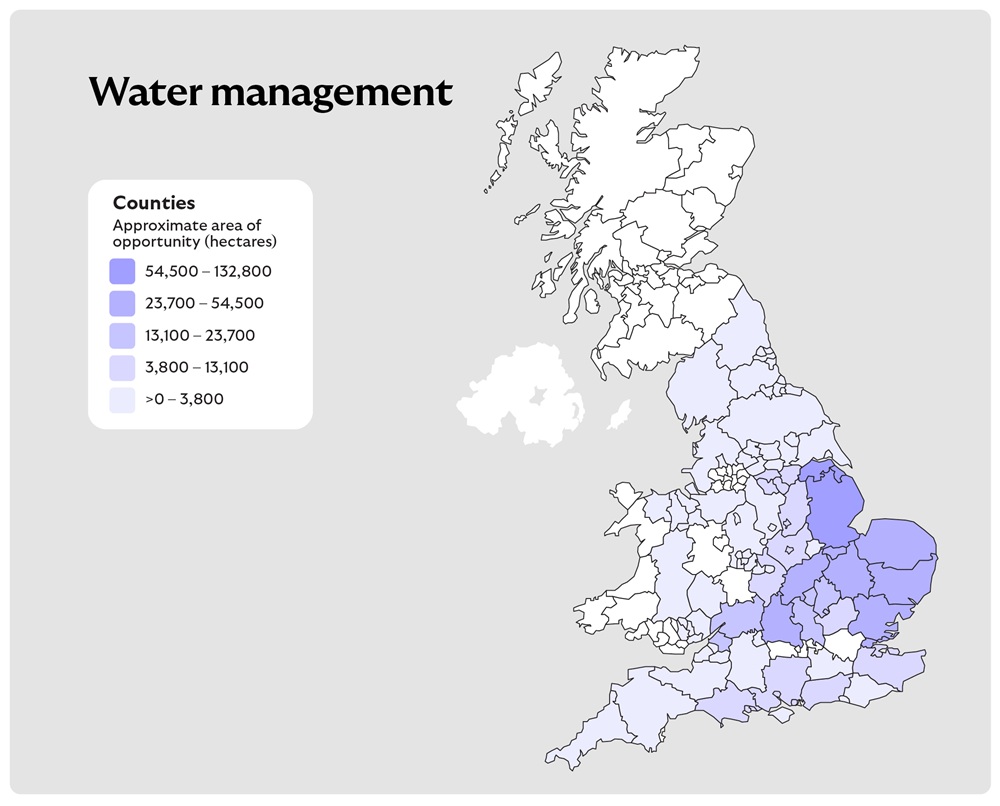
A map of the United Kingdom titled "Water management" displays counties shaded in five shades of blue, representing approximate areas of opportunity for water management in hectares. The legend categorises these as: lightest blue (>0–3,800 ha), light blue (3,800–13,100 ha), medium blue (13,100–23,700 ha), second darkest blue (23,700–54,500 ha), and darkest blue (54,500–132,800 ha). The map visually highlights regional variations in water management potential across the UK.
Daniel Roberts Moor Farm, Baschurch, ShropshireWe’ve got a 90,000-litre subterranean tank and that feeds all the cattle and pigs, certainly through the winter. With a cow drinking 60 litres of water a day, it’s a huge offset.
Approximately 10% (500,000 hectares) of the assessed area was identified for the introduction of, or increases in, cover cropping, with benefits for soil health, fertility and reduced input costs.
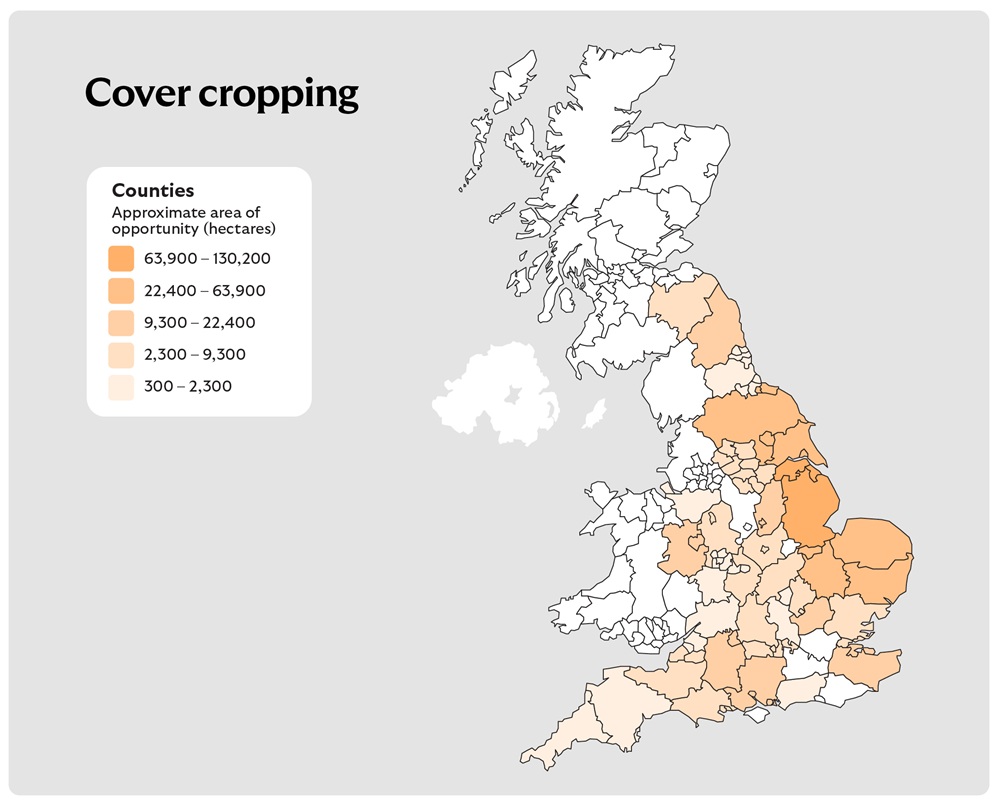
Hugh Forsyth Tubbs End Farms Ltd., WarwickshireWe’re always putting something in the ground – cover crops after harvest, companion crops with our cereals and herbal leys in rotation – to keep our soils alive, build fertility and reduce our reliance on inputs. It’s about being more self-sufficient, looking after the land and making the numbers stack up for the future.
600,000 hectares are identified for tree and hedge planting, supporting climate resilience, livestock welfare and flood mitigation.
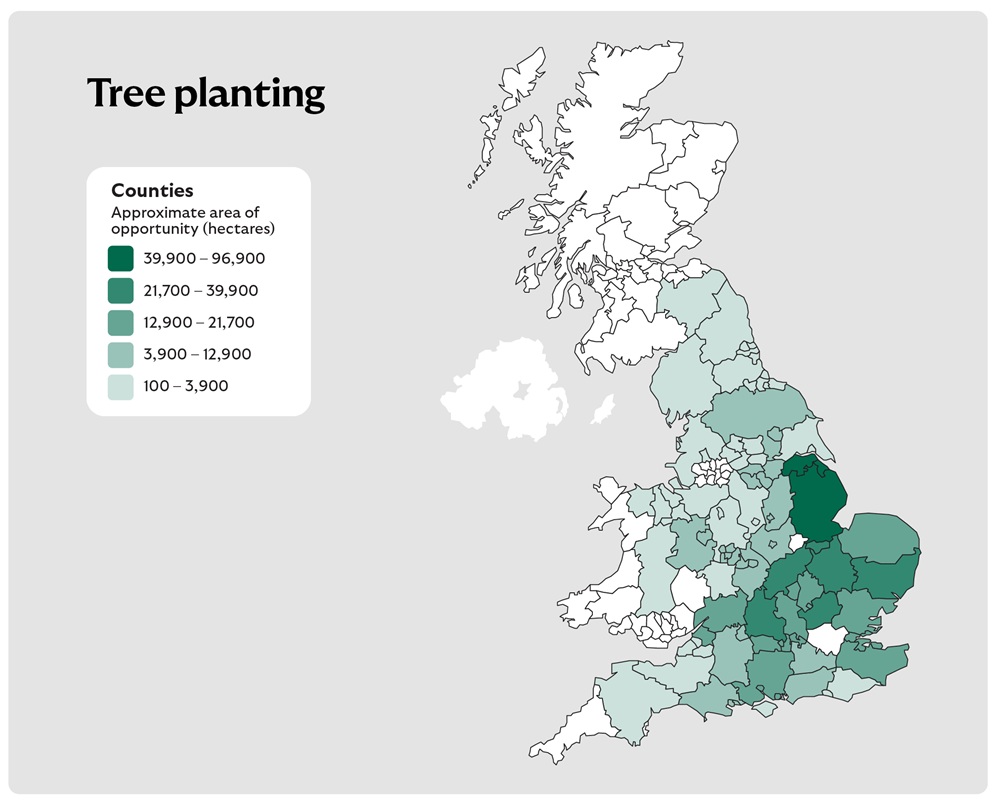
Michael Strother J M Strother and Son, Wooler, NorthumberlandBy planting over 200 metres of new hedges and more than 50 trees in a rough corner of the field, I’ve turned unproductive land into an agroforestry plot that supports biodiversity, provides new habitats and is now more profitable [through grants] than the wheat growing on the other side of the hedge.
Approximately 1.2 million hectares with high potential for habitat creation, enhancing biodiversity and ecosystem services.
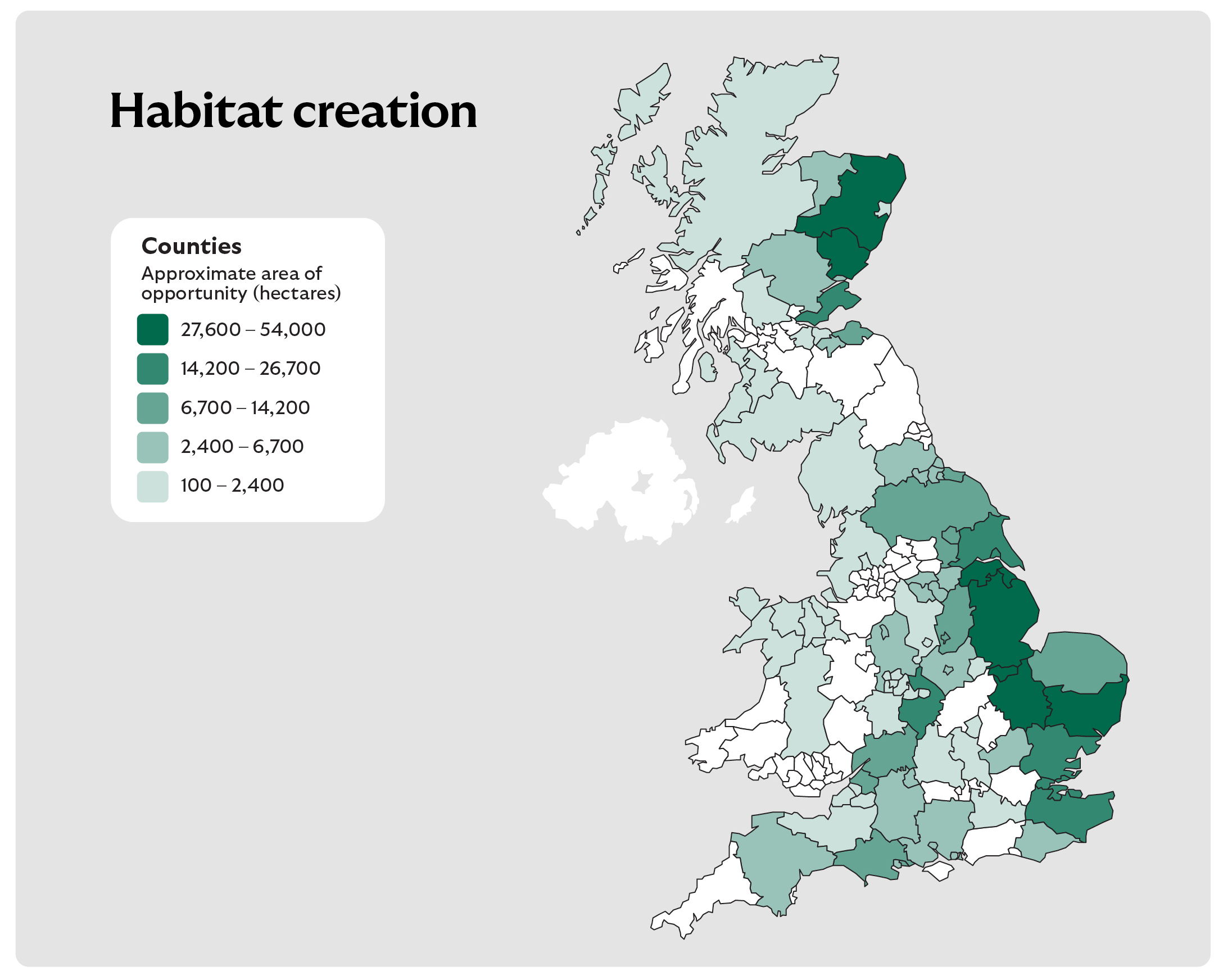
Nick Phillips Kilkenny Farm, Cirencester, GloucestershireGenerally, we don’t use pesticides at all any more since planting environmental strips because they seem to harbour beneficial insects which eat unwanted insects in the combinable crops.
In a time of constrained resources, knowing where the greatest benefits lie is critical. By mapping opportunities, developing evidence and enabling new support for practical change, we believe we can produce flexible, evidence-based pathways for action.
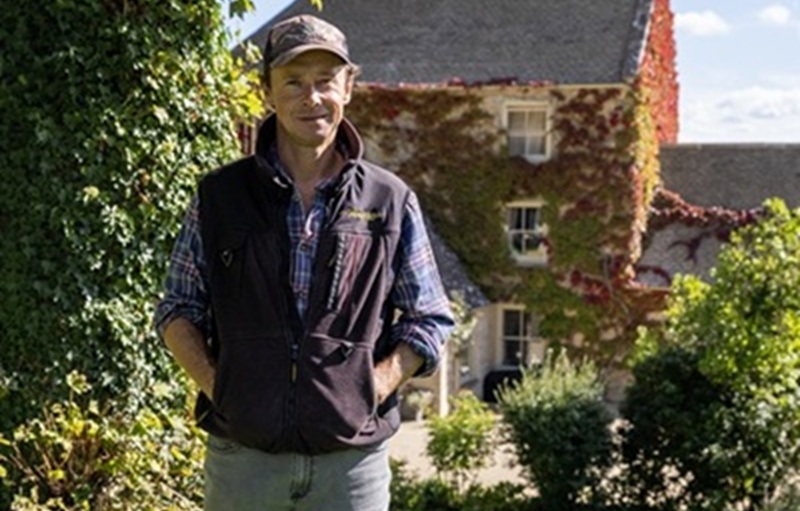
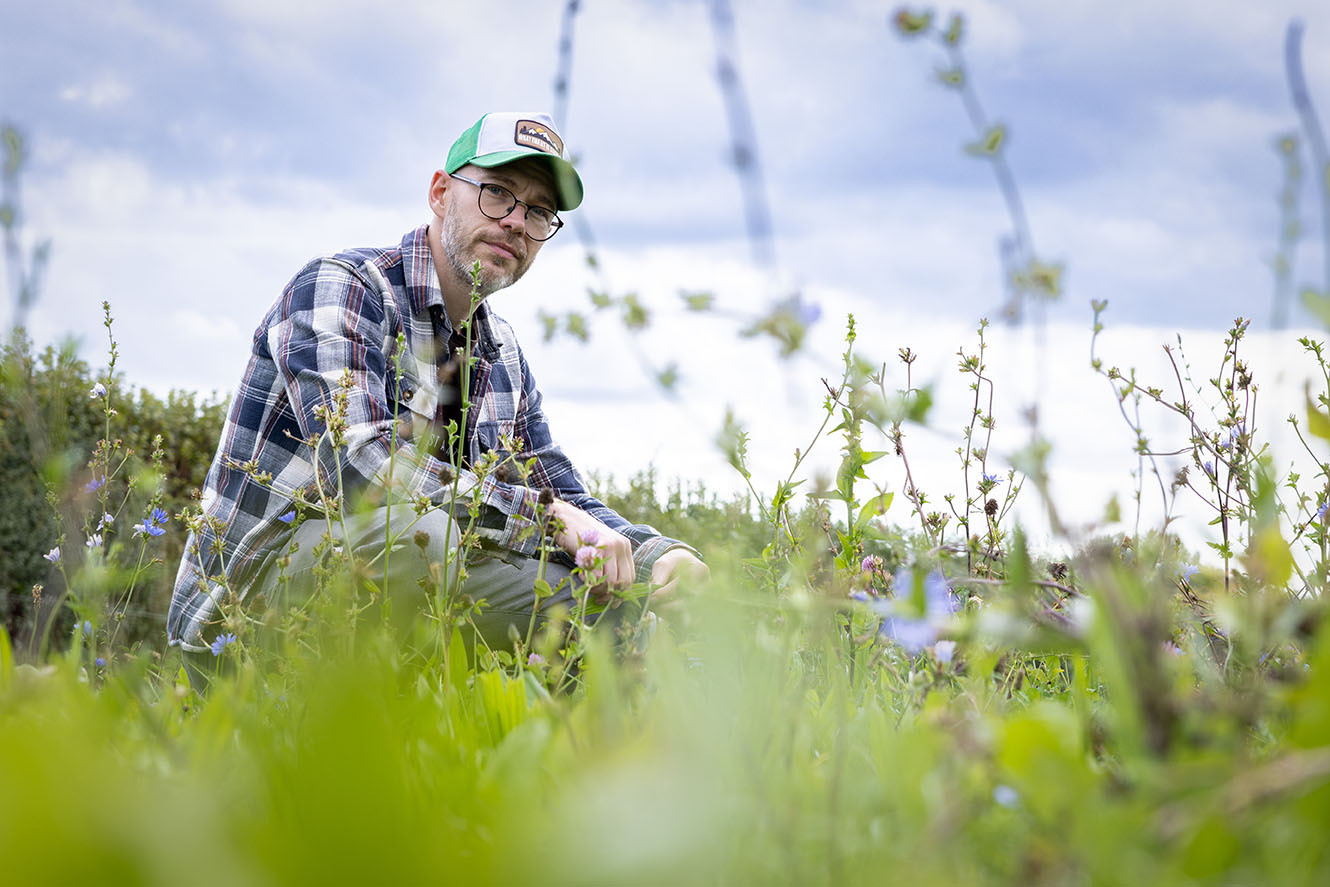
Switching to sustainable farming is an undertaking for any farming business and it’s well understood that the cost of changing practices remains a barrier for the industry.
For instance, the Grounded in Evidence report showed that early reductions in cereal yields could be as high as 25% as farms adapt their practices to more regenerative systems. These dips are often seen in practices such as cover cropping or crop rotations, which require a shift in traditional farming methods.
However, these losses are typically short-lived and lead to longer-term benefits. Importantly, profitability improves over time as soil health increases and input costs decrease, but getting there presents risk. But while there are undoubtedly hurdles to embracing a more sustainable way of farming, with the right support, they can be overcome.
To support agriculture and food production, while enabling farmers and landowners to spot the opportunities for transition, Lloyds has commissioned Savills to undertake a project to highlight the most rewarding farming practices that can help businesses meet economic and environmental goals. We have drawn on these findings and analysed the margins for different farming scenarios following the implementation of recommended practices.
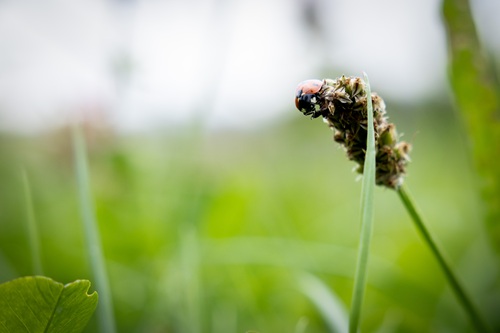
While there is no universally accepted definition of regenerative farming, both regenerative and sustainable farming work towards long-term environmental health and can include various practices such as enhancing soil health and minimising disturbance, boosting biodiversity, reducing chemical inputs and integrating livestock. Regenerative farming typically goes a step further by actively restoring and enhancing ecosystems through a more holistic approach.
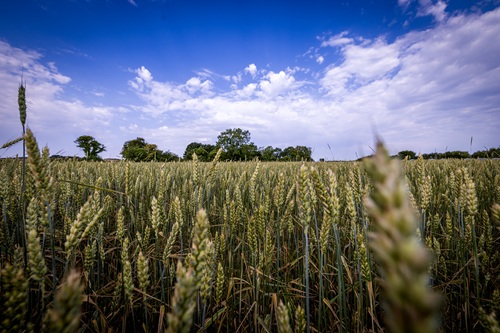
Analysis of a 400-hectare arable system demonstrates the power of blending the right sustainable practices. By introducing cover crops, legume fallows and more diverse rotations, the model shows significant financial, environmental and social benefits – the triple bottom line in action.
On the financial side, reduced fertiliser, pesticide and fuel use deliver savings of over £61,000 per year, equating to £150 per hectare. While some additional contracting and establishment costs are incurred, the net effect is positive and shows that farming with nature can also strengthen profitability. Environmentally, the changes enhance soil health, organic matter and biodiversity, while lowering nutrient loss and emissions.
This case illustrates the wider opportunity that by layering sustainable practices, farmers can achieve measurable gains for nature and climate resilience, while reinforcing long-term business viability. It is a pilot for how sustainable farming delivers returns on all fronts for an arable business.
Hugh Forsyth Tubbs End Farm, Butlers Marston, WarwickshireNowadays, in any sort of farming, if you fail, you've lost money. There's no second chance. When we started, if you had a bad season, you'd just scraped through. But now, any slight hiccup in growing crops or running your business, there's no coming back. The margins are that tight.
At Lloyds we are committed to supporting farmers as they navigate the near-term challenges with switching to more sustainable practices. In our 2024 Grounded in Evidence report, we called on government to back a standardised methodology for measuring farms’ environmental impact; develop a decarbonisation and nature strategy for agriculture; and collaborate with industry to overcome the barriers faced by farmers, including unblocking the financial flows needed to deliver change.
We remain committed to those calls and to playing our own part in helping to deliver progress, including through both sharing our insights and contributing our own action. This report provides further evidence of the opportunities available and aims to accelerate action.
Each move to a more sustainable farming system starts with identifying which principles will work best on a particular farm. While for some, cover cropping and a change in crops planted might be the best route, for others it might be introducing livestock, or a greater focus on what inputs, chemical or otherwise, are used. Often, it’s about embracing the concept of land sharing, not sparing, where mutually beneficial practices sit alongside one another without the need to take land out of production.
While changing to a more sustainable farming system has many challenges, the opportunity to pursue the transition in a way that retains land productivity and business profitability makes it a crucial investment.
A farmer is best placed to decide how they will manage their business, but key industry partners need to support them. We are working across industry to empower our farming clients to understand their available options and potential benefits. We are drawing on the extensive network and expertise of our Agricultural Relationship Managers, funding environmental baseline assessments and rural consultancy through our partnership with Soil Association Exchange and co-creating new blended funding models.
We are also expanding our suite of products and our new Agriculture Transition Finance product reflects our commitment to working on new solutions for the sector and sits alongside existing products that can provide farmers with the support and confidence they need to navigate a shift to more sustainable farming systems.
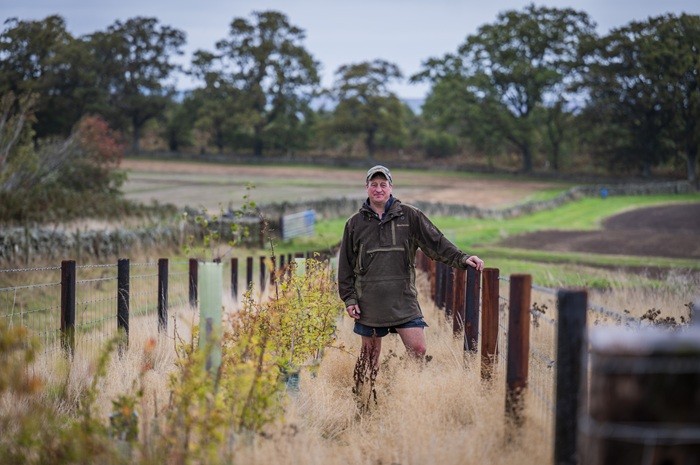
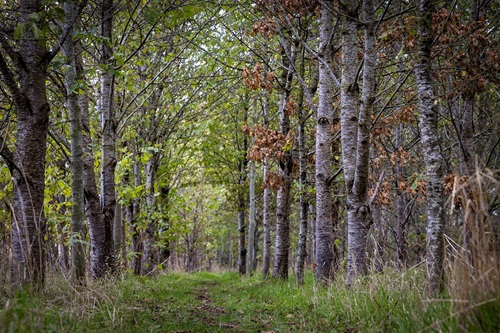
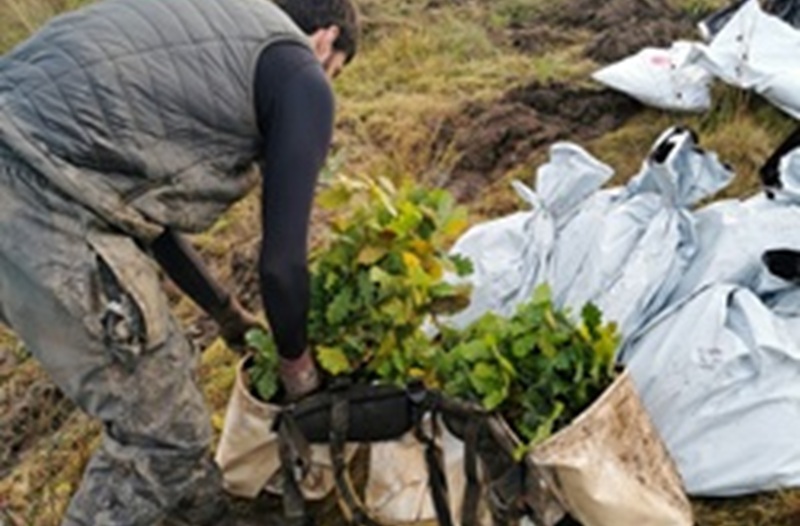
As this report shows, we understand the challenges facing farmers in the UK. Finance and policy, alongside trusted advice and guidance, will determine the pace and scale of transition across UK agriculture.
We have long believed that with the right investment signals, long-term certainty and evidence-led partnerships, farm businesses can improve productivity, protect nature and unlock new income streams.
Lloyds Banking Group recognises the importance of tailored finance in supporting the agricultural sector, as evidenced by our popular Clean Growth Finance Initiative. Our landmark partnership with Soil Association Exchange has also created the UK’s most comprehensive environmental baseline of farm performance, now covering over 850 farms. This insight is being used to unlock new forms of finance that reward sustainability, starting with the Exchange Market pilot.
Through this initiative, farmers are financially rewarded for adopting action plans that reduce emissions and improve biodiversity, such as direct drilling or reduced tillage, cover cropping, and nutrient management with 50% of the annual payment made upfront to support change adoption. Verified through the Soil Association Exchange platform, these actions are funded by a coalition of businesses within shared supply chains.
Importantly, the Exchange Market operates as a carbon insetting fund, meaning farmers are paid to reduce emissions within their supply chains without the sale of carbon credits. This collaborative funding model, of which Lloyds is a convening partner, involves businesses, including large retailers and landowners, and is an example of stakeholders with common goals pooling funds to support farmers to meet sustainability goals.
Through our work with our partners and clients, we have seen how trusted data, clear advice and financial support drives uptake. This model shows how farmers, banks, food businesses and landowners can co-invest in a functioning environmental economy, where value is fairly distributed and risk is shared. We now need nature to be valued more broadly by the supply chain in the same regard as emissions and carbon.
Our network of relationship managers, and Soil Association Exchange consultancy, can help translate regional insights into tailored advice and actions for clients on the ground, encouraging farmers to prioritise the best actions in their region.
These five case studies, supported by Savills Food and Farming Consultants, illustrate how farm businesses are transitioning to sustainable and regenerative practices. Though their journeys are as diverse as the regions and farming systems they represent, together they highlight the sector’s opportunities and challenges. Aligned with our policy asks, they demonstrate the importance of collaboration – following a blended approach to public and private sector finance and highlight the need for a robust common methodology to measure impact.
Finance provides momentum, but policy can play a critical role in determining the direction of travel for both providers and users of finance. For farm businesses to commit to long-term environmental and productivity improvements, they need confidence that policy will remain consistent and that they can count on the contribution it makes to stay the course.
Lloyds is calling for a joined-up framework that creates stability for farmers and investors alike, embedding sustainable finance into the Environmental Improvement Plan (EIP), the Land Use Framework (LUF) and the proposed 25-Year Farming Roadmap.
Nick Phillips Kilkenny Farm, Cirencester, GloucestershireGrants and Stewardship schemes have been a big driver for us because we know that once we establish a measure, such as a wildflower area, there's a clear margin and guaranteed income for the duration of the scheme"
The Government’s commitment to a long-term roadmap is invaluable and provides a landmark opportunity for government to encourage supply chain partners to align their support for food production, environmental recovery and economic resilience.
At the same time, common data standards are vital to reduce confusion, build trust in data use among farm businesses, and unlock its potential to help chart a path to a more resilient future. Too often, the burden of generating data from different providers who use inconsistent metrics discourages farmers from doing so.
A single national approach to measuring a farm’s holistic footprint, building on the lessons learned and value demonstrated by the use of services such as Soil Association Exchange, can simplify access to blending both public schemes and private finance.
Policy also has a role in facilitating new income streams that can provide farmers with additional returns alongside food production. Alongside well-established opportunities in areas like energy generation, there is potential for farmers who wish to do so to benefit from supply chain schemes such as Exchange Market and voluntary carbon and nature markets, receiving reward for enhancing biodiversity and providing water-related services.
These new third-income models can provide vital returns but at present, they are not only unfamiliar, but do not enjoy widespread trust. To realise the opportunities they can offer, the UK needs robust standards, long-term signals and fair risk-sharing to enable them to scale-up.
Finally, we encourage government to use public finance more strategically to de-risk investment and better unlock long-term growth in farm businesses and rural communities. Revised public programmes should provide the certainty needed for farmers to make long-term investments in the transition. Greater use of blended finance – combining public funds with private capital – could meanwhile provide a means to target finite public funding where it can enable long-term returns and encourage matching private finance for Britain’s farmers.
It is promising to note positive steps are underway in the UK’s landscape of policy action and public-private partnerships. Jobs and economic growth, alongside real accelerated action on nature, are a priority for the UK Government – and tools are in the works to deliver these goals.
The Farming Roadmap, EIP and LUF together could create the perfect environment for this type of finance, helping to direct investment where it’s most needed. Lloyds is working with our public and private partners to support the design and delivery of these tools. Collaboration is crucial if we are to accelerate the shift toward sustainable farming, ensuring that financial risk is mitigated, and the transition is financially viable for farmers.
To help achieve these goals and grasp the opportunities they can unlock, Lloyds has developed four UK policy asks to address key barriers farmers face in their transition to sustainable farming.
Develop the Roadmap to create an enduring, long-term plan linking productivity, food security and nature recovery, providing stability for farm businesses and investors by acting as a single point of reference on the transition.
Adopt a single, trusted methodology for measuring farm environmental impact, building confidence and simplifying access to stacking both public schemes and private finance.
Enable market-based income from carbon, biodiversity and water services through clear rules, trusted verification and long-term policy backing.
Use public finance innovatively to unlock private capital and support multi-year change by sharing risk and scaling investment in sustainable farm practices.
With these elements in place, there is a role beyond central government for local and devolved administrations to get involved, making sure local actors - who may be best placed to advocate for regional needs and grant allocation – could help contribute to national goals. As a convener, Lloyds can help central and local government on making sure that happens; the regional insights provided in this report have been produced with collaboration with local and regional actors specifically in mind.
Projects such as the Sustainable Markets Initiative’s (SMI) Routes to Regen and the government’s Projects for Nature are early examples of this shift. But for real impact, policy must accelerate delivery, enabling scalable models like Exchange Market to operate across regions and sectors.
As the largest lender to UK agriculture, Lloyds is investing in the systems that will lay foundations for the sector’s future through partnerships, pilots, and financial products that deliver both environmental and economic value.
This includes products like the Clean Growth Finance Initiative, which offers zero per cent arrangement fees for term lending or a margin discount for asset finance for projects that improve energy efficiency, water use and emissions reduction, as well as new financial tools designed to bridge the ‘yield dip’ often experienced during practice change.
The greatest opportunity lies in collaboration, bringing together policy, finance and the food supply chain – and beyond - to accelerate this transition.
Connected sectors such as water companies, transport and land developers are already working with farmers, and will continue to do so, to implement nature-based solutions that restore biodiversity, reduce flood risk or improve water quality. This shared support for nature recovery will ensure a farming sector that is not only sustainable, but one that is helping Britain prosper by being economically strong, collaborative, globally competitive, and future-proof.
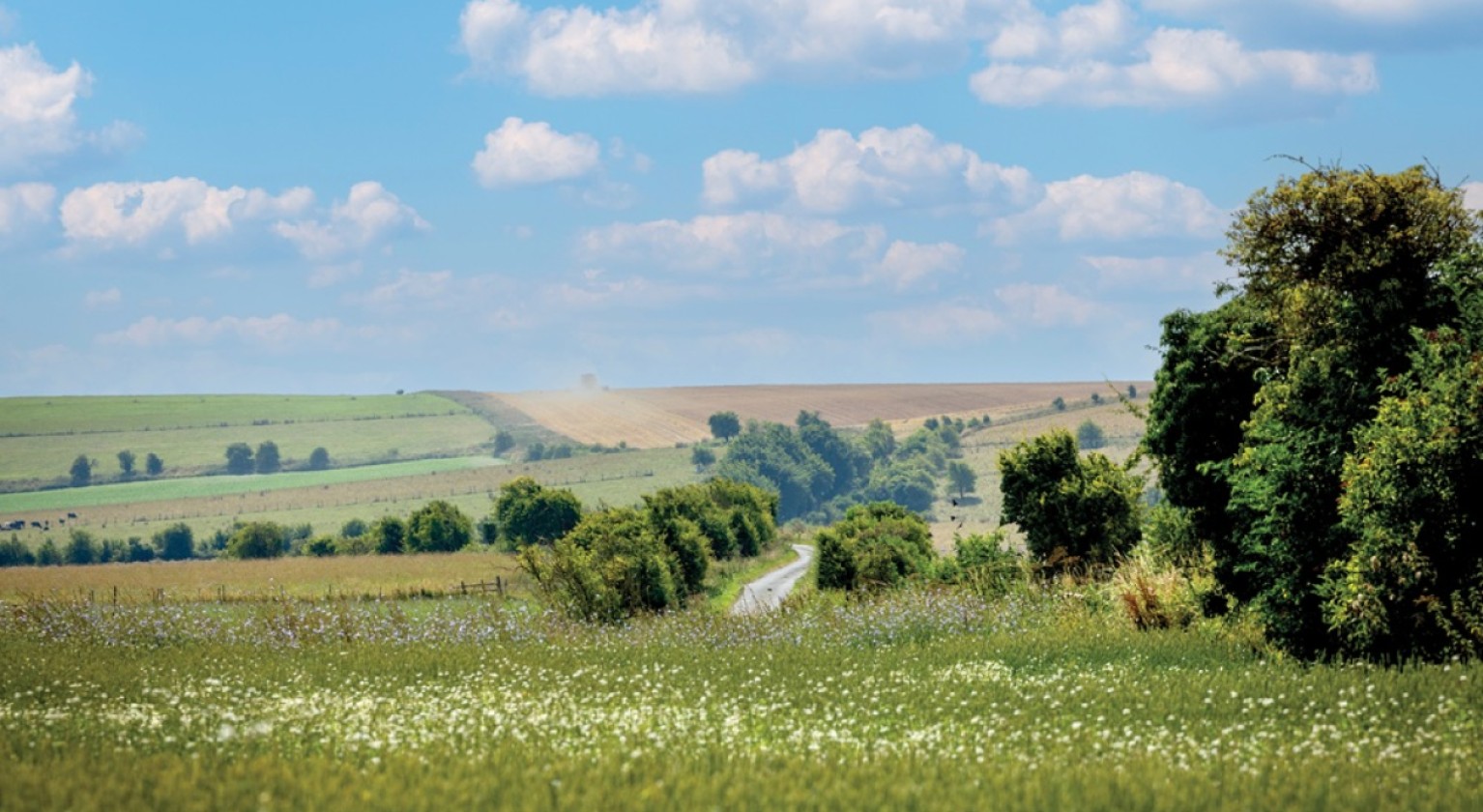
As this report shows, there are many opportunities to farm in a more sustainable and nature-focused way and there is a strong business case when you pair the right mindset with the right practices.
Importantly, many of the case studies highlighted were enabled by SFI and other grant funding, reinforcing the joint role of public and private finance.
We understand that the challenge of becoming more sustainable is significant for many farmers and landowners and that is why, we are committed to helping our customers make that journey successfully.
We implicitly understand farming is a long-term commitment and that is why, with our Agriculture Transition Finance, we are keen to support farmers and landowners in their journey from one farming system to another.
Whether it is improving the financial performance and resilience of a business or providing more opportunities for nature to flourish following a change in practices, the benefits for the agricultural industry and rural ecosystem are significant.
This commitment to the rural economy is why Lloyds Banking Group, as the largest financial partner to UK agriculture serving over 46,000 farming businesses, wants to support farmers and landowners in their transition to a more sustainable future.
A thriving agricultural industry is the bedrock of the rural economy and sits at the heart of the UK’s wider resilience and growth.
This paper has been written with insights from Earth Blox, Savills, Soil Association Exchange and written with the support of Pinstone and the Lloyds Bank Agricultural, Group Sustainable Business and Group Corporate Affairs team.
As the UK’s largest financial services provider, we have an important role to play in creating a more sustainable and inclusive future for people and businesses, by shaping finance as a force for good.
6 March 2025 | Andrew Walton
The latest carbon budget, released by the Climate Change Committee (CCC) on 26 February, highlights electrification and private sector financing as crucial for reducing emissions.
23 January 2025 | Charlie Nunn
Charlie Nunn meets our clients at Newlyns Farm, to talk about the part they play in their local community, the role sustainability plays in farming, and how they’re adapting to new challenges.